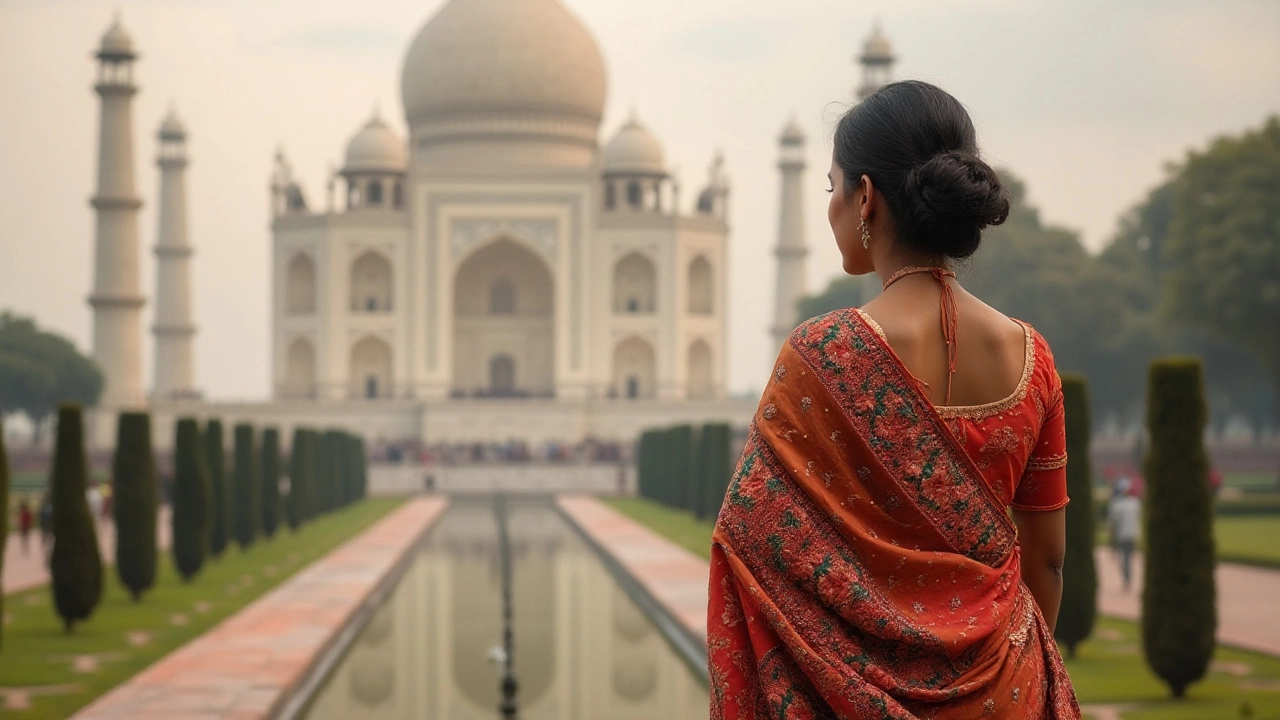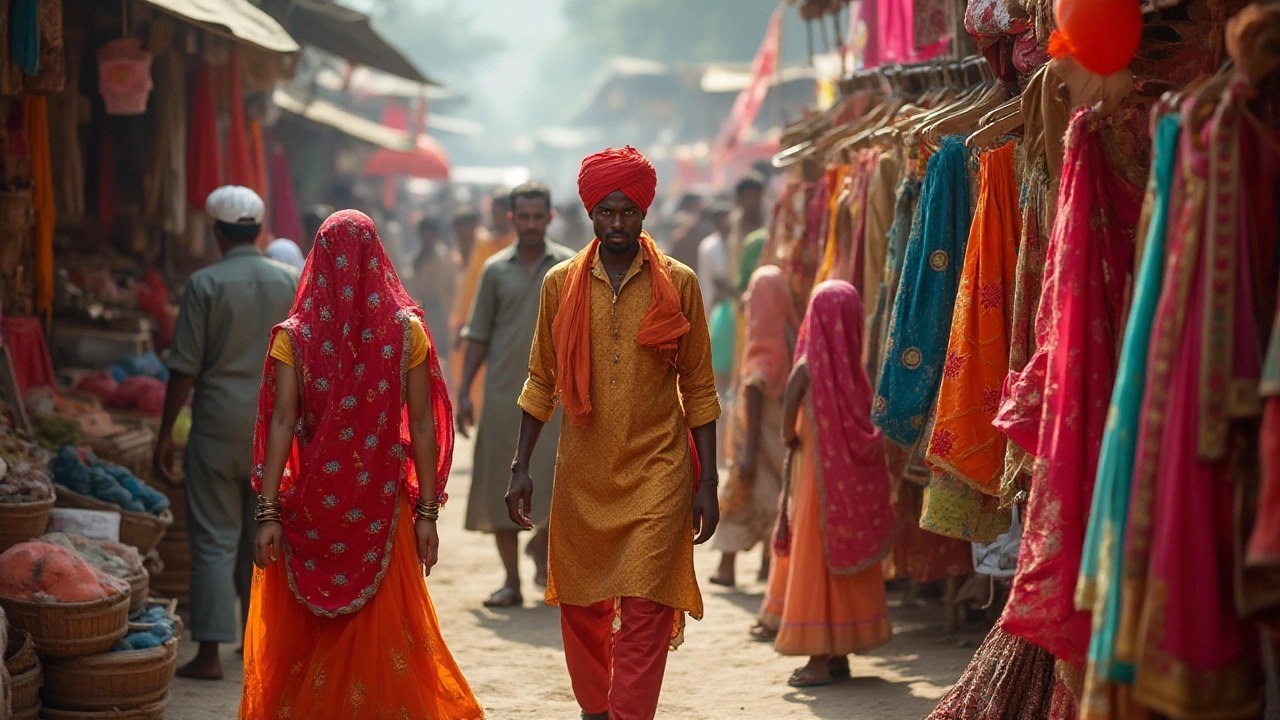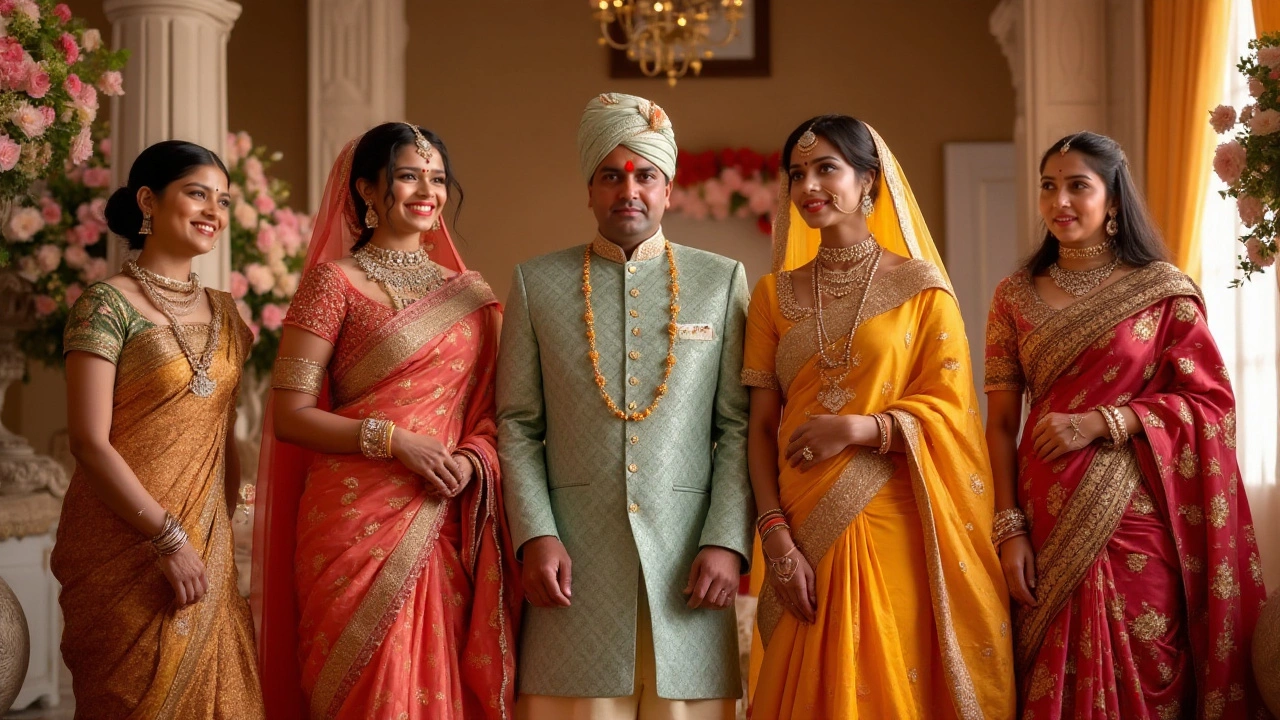In a country as diverse and vibrant as India, the clothes people wear tell a story as rich as the culture itself. Dressing in traditional Indian attire is more than just a fashion choice—it's a way to celebrate and honor centuries-old traditions that bind the community.
Understanding the etiquette involved in wearing these beautiful garments is important not only to appreciate the clothes themselves but also to show respect for the culture they come from. Whether attending a wedding, a festival, or a formal event, knowing when and how to wear items like saris, kurtas, or sherwanis can make all the difference in your appearance and reception.
This guide will take you through the ins and outs of Indian fashion traditions, offering insights into what to wear and when, ensuring you do so with grace and respect.
- The Significance of Traditional Indian Clothing
- Dress Codes for Different Occasions
- Dos and Don'ts of Indian Attire
- Styling Tips for Men and Women
- The Importance of Accessories
The Significance of Traditional Indian Clothing
Traditional Indian clothing is not just a visual treat of vibrant colors and textiles; it is a vital element of the cultural identity that spans the diverse landscapes of India. Each region, from Punjab’s dynamic phulkari to Tamil Nadu’s graceful kanjivaram silks, narrates a unique story of heritage, craftsmanship, and history. The roots of these garments often stem from centuries-old traditions, where each weave, print, and dye is deeply symbolic and carries a meaning beyond its aesthetic.
Consider the sari, a quintessential piece of Indian wardrobe, which is perhaps as varied as the continent itself. Drifting beyond just an attire, the sari represents elegance and grace, with differences in draping styles indicating cultural nuances from state to state. Its versatility allows it to be simple or extraordinarily ornate, making it suitable for both everyday wear and grand festivities. Similarly, the turban, or pagri, worn by men in several regions, is not just a fashion statement but a symbol of honor and self-respect.
The significance of these clothing styles was articulated by renowned designer Ritu Kumar, stating: "The textiles and attire of India represent an epoch of history and reflect the cultural ethos of each region, each telling its own separate tale."
Certainly, the choice of traditional clothing also connects with India’s spiritual and religious traditions. During festivals like Diwali or Eid, individuals garb themselves in vibrant attire that often features designs inspired by religious iconography or traditional symbols. This isn't just to present a visual spectacle but to draw oneself closer to the divine, an expression of joy, reverence, and continuity of community. Furthermore, the garments are often crafted with eco-friendly materials, tying into age-old sustainable practices that modern fashion is now beginning to rediscover.
The world today also recognizes the global impact of Indian fashion, with designers incorporating elements like intricate embroidery and rich color palettes into their collections. It’s a beautiful nod to a style that has transcended borders, bringing a piece of Indian culture to streets across the world. Indeed, cultural fashion from India is not only about aesthetics but also a bridge connecting generations, sharing stories of grandparents, artisans, and the ever-evolving dialogue between tradition and modernity. The role of traditional attire remains as relevant now as it did centuries ago, illustrating how deeply embedded these clothes are in the Indian psyche, an untold story of India’s diverse yet united cultural fabric.
Dress Codes for Different Occasions
Dressing for a specific event in India requires an understanding of the cultural and social significance behind the occasion. Garments aren't just clothing items; they are embodiments of tradition and respect. One popular occasion that highlights traditional Indian attire is the wedding. Weddings, being multi-day events filled with ceremonies, offer the opportunity to wear a diversity of traditional Indian clothing. For most weddings, men typically don an elegant sherwani or a kurta-pajama combination, often paired with a churidar. Women frequently opt for vibrant and intricate sarees or lehengas, adorned with embroidery and sparkling accessories. The focus is on showcasing culture, color, and craftsmanship, making the attire as much a part of the celebration as the rituals themselves.
Moving from weddings, we consider festivals such as Diwali or Holi, where traditional attire takes on a more vivid and relaxed form. Festivals are a time to express joy and community spirit, and the clothing reflects this exuberance. During such festivals, it is common to see men in crisp, colorful kurtas, while women embrace lighter fabrics like cotton or silk sarees, often in cheerful hues that signify the festive air. An important aspect of these occasions is the practicality of movement and the attire’s ability to withstand activities like dancing or public celebrations. Comfort intertwined with tradition is key during these lively times.
Religious Ceremonies
Religious ceremonies require a different level of attire formality. Here, traditional garments are worn with conventuality in mind, often reflecting the sacredness of the event. White or lighter hues are prevalent since they are typically associated with purity across many Indian cultures. Men might dress in a plain kurta with dhotis, while women might lean towards a simple saree or salwar suit. When participating in these rituals, it's crucial to maintain a sense of propriety and modesty, aligning with the spiritual ambiance of the event.
"Indian clothing is an art form, each stitch and fabric choice is a nod to a history rich in diversity and storytelling," mentioned renowned designer Manish Malhotra.
When it comes to cultural gatherings or formal celebrations not tied to weddings or religious events, the attire must match the elegance expected while blending a hint of Indian tradition. A gala dinner might see men in sophisticated bandhgalas, whereas women might choose an indo-western gown or an intricately patterned saree. The balance here is between traditional motifs and modern cuts, ensuring that while the attire speaks to age-old styles, it also meets contemporary fashion standards. This fusion not only respects traditions but also allows for a personal touch.
Understanding the nuances of dress codes for different occasions in India requires a blend of cultural insight and a keen sense of fashion. One must carefully select garments that honor the occasion's spirit, keeping in mind the cultural values and personal expression. Such attentiveness ensures both respect and a deeper connection to the timeless traditions that Indian attire so beautifully embodies.

Dos and Don'ts of Indian Attire
When it comes to traditional Indian clothing, understanding the cultural nuances is key to making the right impression. Wearing Indian attire is an opportunity to immerse oneself in the rich traditions of the subcontinent, and doing so with the proper etiquette is necessary. Indian clothing, with its vibrant colors and intricate designs, varies greatly across regions and occasions, offering a tapestry that speaks centuries of history and culture. One of the essential dos is to ensure that your attire is appropriate for the event you're attending. For example, saris are often a go-to for formal occasions, while casual gatherings might call for the elegance of a simple kurta. When wearing these traditional garments, you must pay attention to how they are styled and fitted, ensuring they are not too revealing, which might be considered disrespectful in certain settings.
A critical don't is to avoid cultural appropriation, which can be a sensitive issue. Dressing in traditional Indian clothing with respect means understanding the historical and cultural significance behind each piece. Whether it’s a bindi, turban, or lehenga, these articles are deeply rooted in ancient customs and should be worn with an appreciation of their origins. It’s always wise to consult with someone who understands the culture well if you're unsure about what is appropriate. As a rule of thumb, wearing attire that is overly styled or incorrectly draped can send the wrong message, perhaps appearing as though one does not respect the customs tied to the clothing. Remember that simplicity and authenticity often hold more value than extravagance in the context of cultural attire.
Accessorizing is another area where the dos and don'ts play a critical role. Accessories such as necklaces, bangles, or earrings help complement traditional outfits in a meaningful way. However, choosing the right jewelry that aligns with the clothes and the occasion is essential. Over-accessorizing can take away from the elegance of the attire and can sometimes come off as flashy or insincere. On the flip side, a minimalist approach often delivers a look that balances both traditional and modern sensibilities beautifully. It's also important to pay attention to the footwear. For traditional attire like saris or salwar kameez, juttis or mojaris are popular and culturally aligned choices compared to western shoes which might not harmonize as well with the outfit.
Taking advice from those immersed in the culture is beneficial. As noted by fashion blogger Neha Sahni,
"The essence of wearing Indian clothes lies in embracing their tradition while letting your personality shine through. It's a celebration of heritage on your terms."This insight underlines the importance of feeling comfortable in what you wear while respecting its cultural roots. Lastly, be aware of traditional color significance. In many parts of India, colors are not chosen at random; red, for example, is often reserved for bridal wear, while white might be seen during solemn occasions. This color consciousness adds an additional layer of understanding to respecting and appreciating cultural fashion.
Styling Tips for Men and Women
Embracing the timeless beauty of traditional Indian clothing allows one to make a lasting impression, and knowing how to style these garments effectively is key. One cannot simply wear a sari or a kurta without understanding the nuances that make these pieces come alive. For men, the art of wearing a kurta or a sherwani lies in the fit and fabric. Choosing the right fabric based on the season—like cotton for summer and silk for winter—ensures comfort and style. Meanwhile, tailoring is crucial. A well-fitted kurta flatters the wearer, allowing ease of movement while showcasing traditional artistry.
When it comes to women, the sari is not just a garment but a realm of possibilities. This versatile piece can be draped in multiple styles—from the classic Nivi drape to the elegant Bengali drape. Each style transforms the sari, creating a unique silhouette. Colors and patterns also play a significant role in how the sari appears. Bright, bold colors may be suited for festive occasions, while subtle hues can add grace to formal events. It’s also intriguing to note that each region in India has its own unique textiles, like the Banarasi silk of Varanasi or the Kanjeevaram silk of Tamil Nadu, offering endless choices.
Accessorizing Traditional Attire
Accessorizing is as important as the clothes themselves in Indian fashion. Men can elevate their look with a simple yet elegant Nehru jacket over their kurta. Meanwhile, women often rely on the grandeur of jewelry. Bangles, earrings, and necklaces made of gold and silver are common sightings. “Jewelry is not just an accessory; it's a part of our heritage,” notes renowned Indian designer Sabyasachi Mukherjee. The right piece of jewelry can accentuate a sari or lehenga, making it truly memorable.
The choice of footwear should not be overlooked either. Men typically opt for mojari or jutti shoes, which complement the elegance of formal traditional attire. These handcrafted shoes add a touch of sophistication to the ensemble. On the other hand, women might prefer embellished sandals, which add sparkle without overshadowing the outfit. It's important, however, to ensure that the footwear matches the formality of the occasion and the attire.
Lastly, a word about blending traditional Indian attire with western styles: it’s both possible and stylish. Men can pair a fitted blazer with their kurta to bridge the gap between western and Indian fashion effortlessly. Women might choose to wear a statement blouse with a western-style skirt, incorporating elements of uniqueness and flair. The key to successful fusion lies in balance—never let one style overpower the other.

The Importance of Accessories
Accessories are the finishing touch that can turn a simple piece of traditional clothing into a stunning cultural expression. In the realm of Indian clothing, accessories go beyond mere decoration; they symbolize deeper meanings and often convey a person's social status, region, or even their marital status. For instance, a mangalsutra is not just a necklace but a sacred piece of jewelry that signifies a woman’s marriage in many Indian communities. The meticulous selection and placement of accessories such as bangles, earrings, necklaces, and headpieces, complement traditional outfits and bring out their rich colors and intricate designs.
One of the fascinating aspects of traditional Indian attire is how accessories can vary significantly between regions. In Northern India, women often adorn themselves with chunky jewelry and ornate headpieces known as maang tikka. Down south, temple jewelry inspired by the intricate designs found in sacred places plays a pivotal role in bridal wear. Aromatic flowers like jasmine are woven into the hair as a natural accessory that carries both elegance and a sweet aroma. This rich diversity allows room for personal expression while maintaining cultural roots.
While women have a plethora of accessories to choose from, men also have their fair share, with the turban (pagri) being a highly significant element. The color and style of a turban can signify anything from a person’s community to their celebration of a festival, such as the bright saffron turbans often seen during weddings. Cufflinks and brooches on traditional attire like the sherwani add a touch of sophistication, while ornate belts can highlight the figure, accentuating the craftsmanship of the garment.
According to famous Indian fashion designer Sabyasachi Mukherjee, "Jewelry and accessories are a lot like the frosting on a cake. They help complete the outfit,
This quote encapsulates the crucial role that accessories play in enhancing traditional outfits.Accessorizing isn't just about aesthetics; often, these pieces are imbued with sentimental value or serve as family heirlooms. Many families cherish generations-old jewelry, passing it down as a way to honor their ancestors and keep their stories alive. This tradition of storytelling through accessories turns them into something much more meaningful than just fashion statements—they become personal memories worn close to the heart.
In modern times, there’s growing interest in sustainable and ethical fashion choices within Indian accessories. Artisans are rediscovering and reviving traditional crafting techniques such as meenakari (enamel work) and filigree, utilizing them to create beautiful pieces without compromising on ethics. Supporting local artisans through purchasing these accessories encourages the preservation and dissemination of these age-old skills, ensuring that the culture and craftsmanship are not lost to time.
